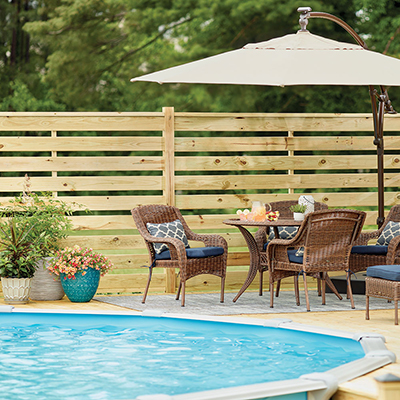How to Install a Pool Filter

Last updated September 7, 2023
The pool filter is the most important part of your pool and is essential for the health and safety of you and your family. While the chlorine or salt content in the pool will kill bacteria, the filter removes the bacteria and debris from the water, keeping the pool safe and pristine. Knowing how to install a pool filter is a useful skill to have. You can replace a pool filter as needed to ensure it is always running at optimal performance. Plus, you can save money on a professional installation by installing a pool filter yourself.
This guide provides a description of each type of pool filter, information on pool filter installation and tips for installing each kind of filter.
Difficulty:
Intermediate
Duration:
2-4 hours
Table of Contents
Choose the Type of Pool Filter
Pick a Location for the Pool Filter
Turn Off the Pool Pump
Assemble the Pool Filter
Prepare the Piping Connections
Connect the Pool Filter to the Pool Water Lines
Choose the Type of Pool Filter
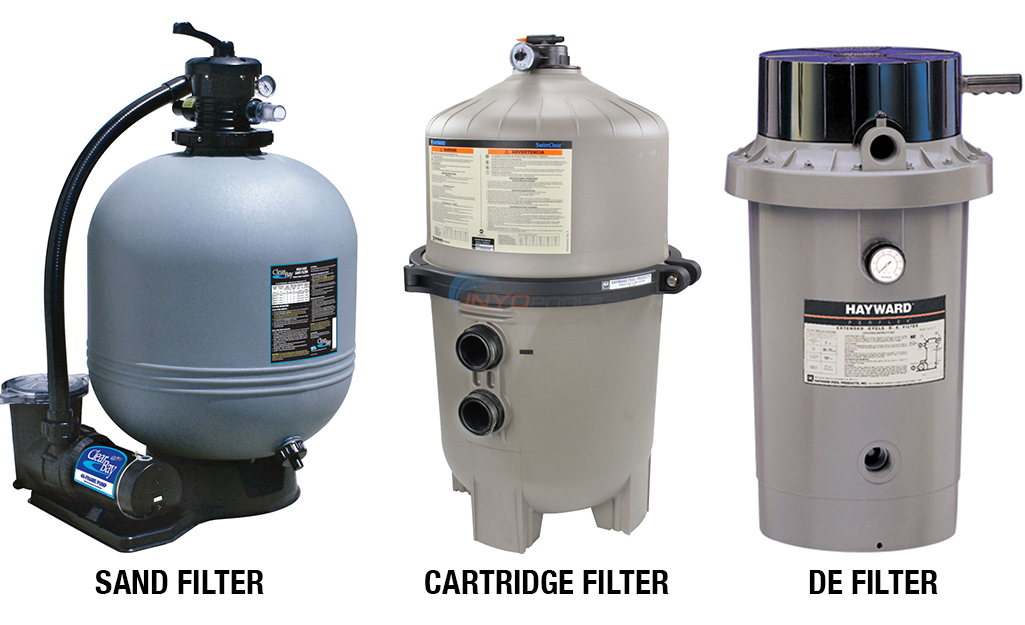
There are three types of pool filters for both in-ground and above-ground pools: a sand filter, cartridge
filter and diatomaceous earth (D.E.) filter. Each type has different
a
filtration mechanism, lifespan and maintenance needs.
- Traditional type of filter
- Uses sand to filter particles as small as 20-microns
- Cannot filter bacteria under 20-microns, so pay special attention to the water chemistry with this type of filter installed
- Has a simple cleaning system in which you “backwash” the filter by running the water through it in reverse and out through a waste line
- Replace sand
every five to seven years - Usually uses silica sand, but you can substitute with filter glass (recycled glass particles) or
zeosand
(particles from a mineral called zeolite)
- Easiest filter to install
- Uses pleated cartridge filters that can filter particles as small as 10-microns
- Easy maintenance
- Remove and rinse cartridges every six months or when internal pressure rises above baseline
- Replace cartridges every two to five years
- Uses and wastes less water than sand filter
- The pool
pump
that feeds water into the filter must be the right size. A too-large pool pump can overpower the cartridges and push water through without filtering.
- Filters with a powder made from fossilized
diatomes, a type of microalgae - D.E. powder coats a filter grid/rod and traps particles on one side as water flows through the filter
- Filters particles as small as 2-microns, making it the most effective of the three filter types
- Requires the most maintenance of the three filter types
- Requires backwash cleaning every month
- Filter grids/rods should also be rinsed or soaked regularly to clean them thoroughly
- Will need more D.E. powder added to grid/rod after every cleaning
- Replace filter grids/rods every five to seven years
- When inhaled, D.E. powder is a carcinogen, so wear a dust mask and exercise caution whenever handling the filter.
Pick a Location for the Pool Filter

The pool pump
connects to the pool filter’s intake valve and pumps water through the filter. The filter transfers the filtered water into the chlorinator, which then releases the water back into the main body of the pool. If your pool has a water heater, the filter will release the water to the heater before the chlorinator. If you are installing a sand filter or a D.E. filter, the filter will have a third valve for backwashing that leads to a wastewater line.
When planning your pool filter installation, ensure you have an ideal location for the filter. The filter should be able to connect to all the necessary pool water lines and be no more than six feet above the pool’s water level. The location should be easily accessible for future cleaning and maintenance. You should also have a suitable location in mind for the wastewater line to release. The pool filter will need to sit on a solid, level surface; a concrete slab is ideal.
Turn Off the Pool Pump

For safety, before installing the pool filter, turn off the pool pump.
Assemble the Pool Filter
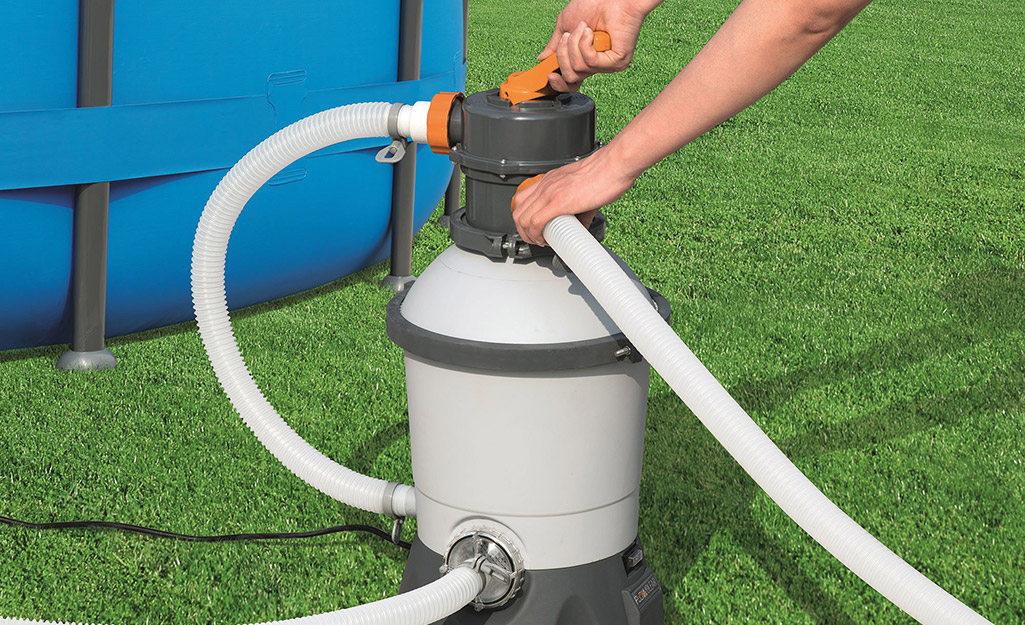
- Assemble the pool filter according to its manufacturer’s instructions. Typically, you will screw in the pressure gauge first, using a wrench to firmly secure the nut on the last few screws. Secure the pool filter’s drain cap.
- Next move on to putting together the internal lateral piping. Follow the manufacturer’s instructions closely, as the internal piping will differ between brands and types of pool filters.
- Once assembled, place the pool filter into position to connect it to the existing pool lines.
Tip: When connecting threaded PVC piping, wrap the threaded sections of the pipes in one to two layers of PTFE thread seal tape before screwing in the pipes to better seal the connections and prevent leaking in the future.
Prepare the Piping Connections
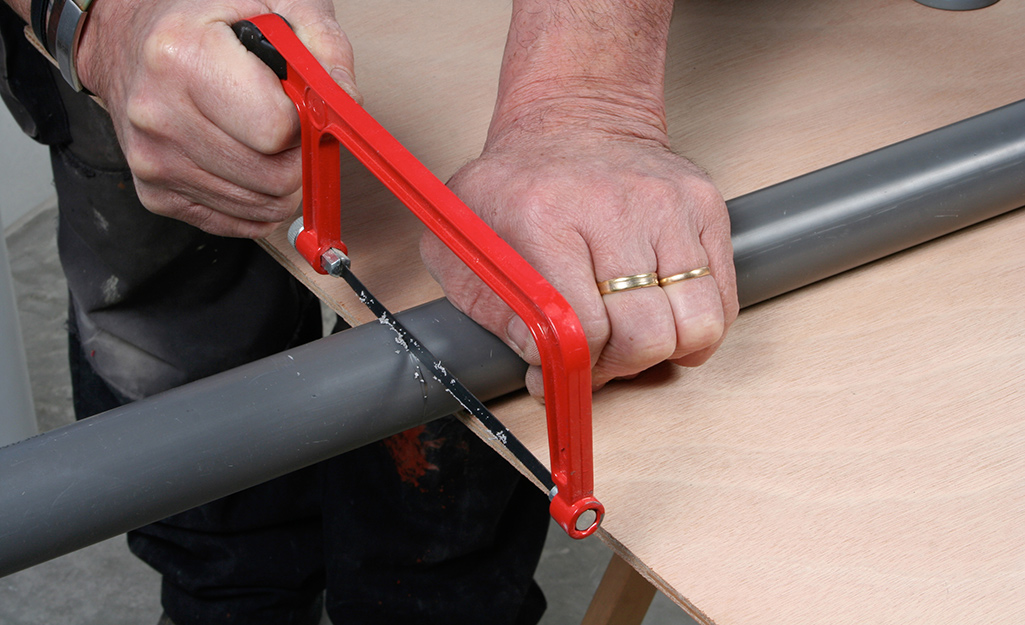
- If you are replacing an existing pool filter with an exact match, then your piping connections should be ready. Thoroughly clean all the pipes and hoses before connecting the new filter.
- If screw-in pool hoses are not an option, you will need to prime and glue PVC pipes and PVC fittings to connect the filter to the pool’s water line. Follow the pool filter’s manufacturer instructions to determine the size, number and length of PVC pipes you will need. You may need to cut the PVC pipe to size with a hacksaw.
- Test all the connections first with a “dry fit” to ensure everything will fit together appropriately. There should be at least 6-inches of pipe for each connection.
- Prime the new pipes with a thin and even layer of PVC primer. Apply the primer only to the areas that are to be joined: about 2-inches on the outside edges of the pipes and the insides of the fittings. Allow the primer to dry.
- Apply PVC adhesive over the dried primer and immediately join the pipe and the fitting.
- Slightly twist the pipe in its fitting to help spread the adhesive evenly, and then allow to dry for at least 30-seconds.
Connect the Pool Filter to the Pool Water Lines

- Connect the pool filter’s pump port to the discharge side of the pool pump.
- Connect the filter’s return port to a line leading to the main body of the pool. This line may be one that first connects to a heater, chlorinator or both.
- If your filter requires backwashing, connect the waste port to a wastewater hose that leads to an appropriate disposal area.
- Allow the piping to set for at least two hours.
- Turn the pool pump back on to test for leaks in any of the new connections.
Record the Initial Internal Pressure
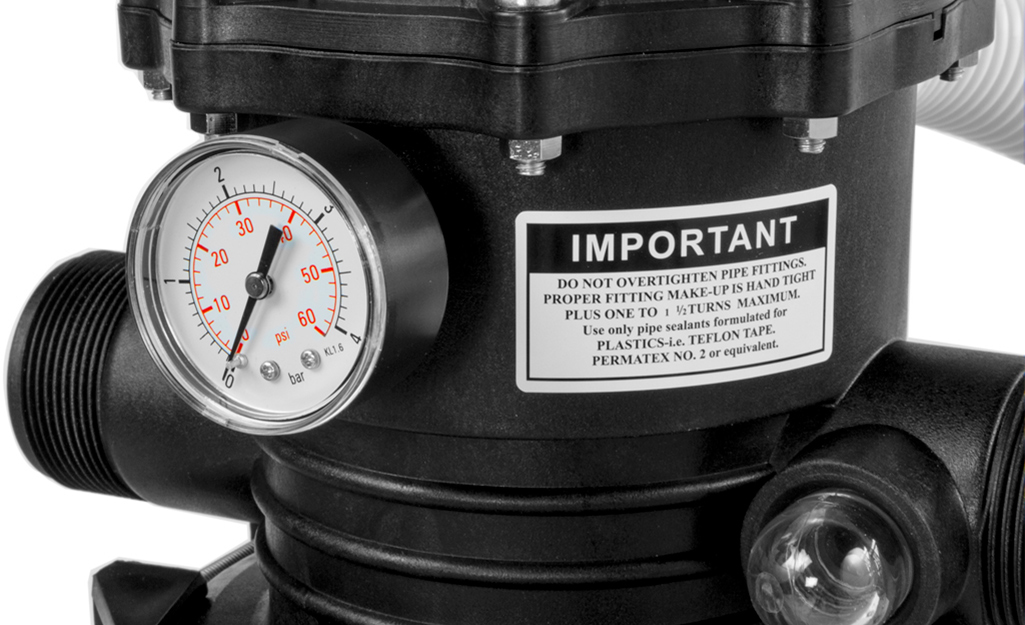
- Once the pool pump is on and there are no leaks, check the pool filter pressure gauge.
- Record the initial pressure reading.
- When the pressure gauge shows an internal pressure 8- to 10-psi above this initial pressure reading, it is time to clean the filter.
Tips for Installing a Sand Pool Filter
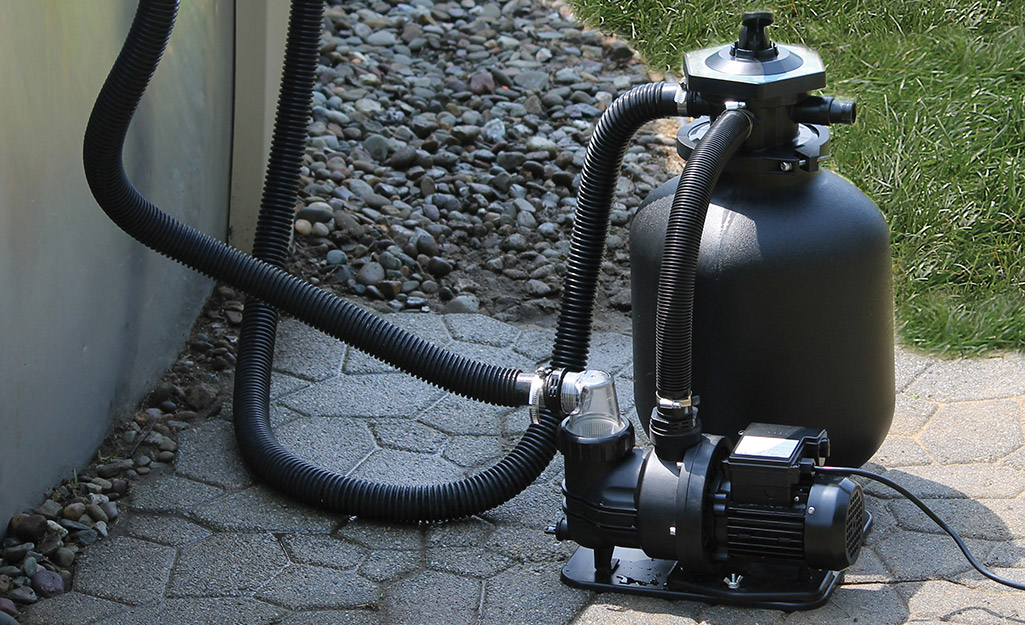
- Purchase the amount of sand or suitable sand alternative recommended by the sand filter’s manufacturer.
- Fill the filter’s tank halfway with water before adding sand to protect the lateral assembly parts.
- Before running for the first time, backwash the filter with the pool pump off. Ensure the wastewater line is ready and releases water in your chosen location.
- After backwashing the filter, turn the pool pump on and set the sand filter to the filter setting.
- In about five to seven years, you should empty the filter’s tank and replace the sand.
Tips for Installing a Cartridge Pool Filter
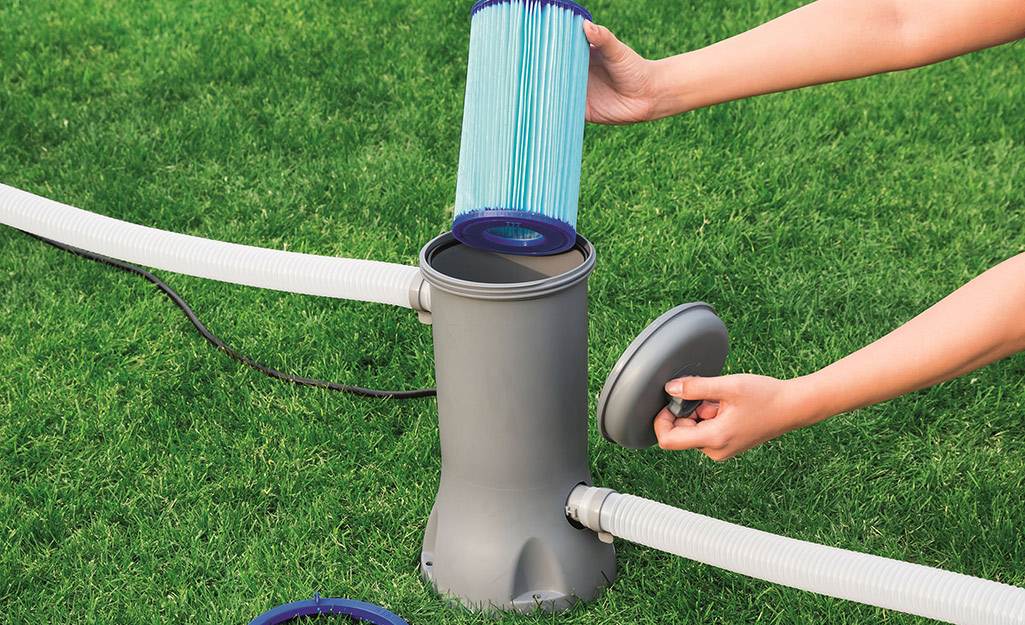
- A cartridge filter does not backwash, so it does not have a wastewater port or line.
- Make sure that wherever you place the cartridge filter, you have enough room to lift its casing up and off when you need to clean or replace the cartridges.
Tips for Installing a D.E. Pool Filter
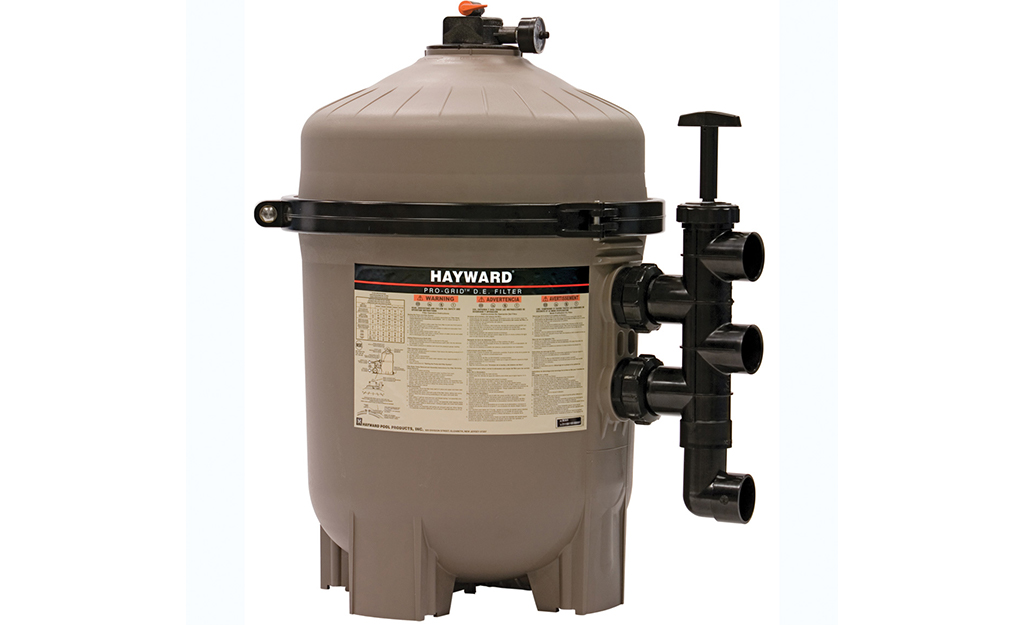
- Wear a dust mask and work gloves whenever working with D.E. powder.
- Apply a layer of D.E. powder to the rods or grids inside the filter. Follow the manufacturer’s recommendations for the necessary amount of D.E. powder.
- For an in-ground pool, add 1-pound of D.E. powder directly to the gutters and skimmers to help coat the filter rods properly.
- For an above-ground pool, add 1-pound of D.E. powder only to the skimmer intakes.
- Always keep D.E. powder out of the main body of pool water.
Knowing how to install a pool filter is an important part of pool maintenance. Return to this pool filter installation guide whenever you need to replace a pool filter or want to install a new type of filtration system. The Home Depot delivers
online orders
when and where you need them.



